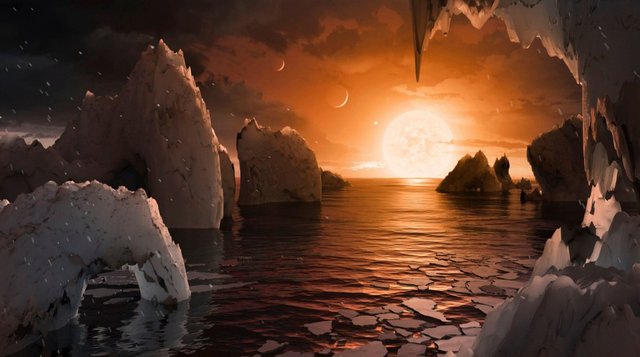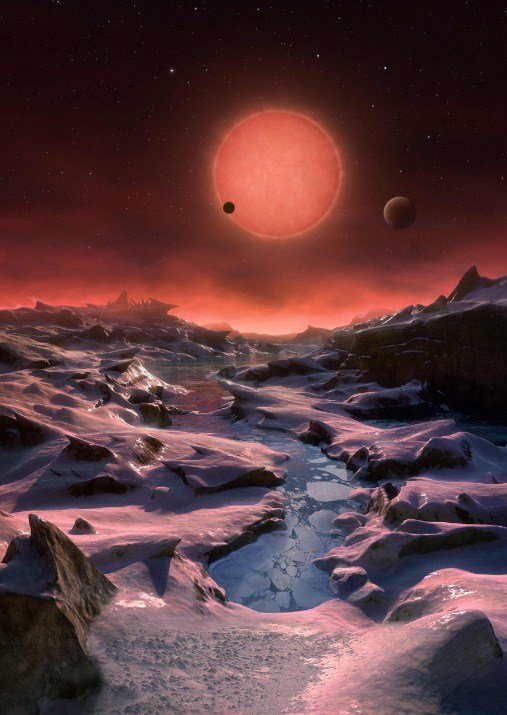
A NASA artist's image of the planet's surface of Trappist-1.
PHOTO: NASA / AP / Scanpix
A recent study shows that much of the planet's Trappist-1 spellbinding alert could have just too much water to live, Arizona University researchers said.
Planets of Trappist-1 discovered a few years ago came to the attention of explorers of extra-terrestrial life after February 2017, when the structure of this system was identified. A study by Belgian scientists indicated that the whole system consists of seven Earth-like planets that are very close to each other, of which even three are still in the so-called "living zone" of the star at the heart of the system - an area that should have exactly the right conditions for the presence of liquid water.

The image of the European Southern Observatory on how the surface of some Trappist-1 planets could look like.
PHOTO: HO / AFP / Scanpix
Of course, such a discovery has excited excitement among extraterrestrial people, but several subsequent studies, however, have been rather skeptical - there are some of the planets found that greatly reduces the likelihood of life. Nobody has questioned the existence of liquid water until now.
The article published by Nature Astronomy , however, shows that the research team led by the researchers at the University of Arizona is doing the opposite - the planets can have even too much water.
Of course, the direct observations of the system located 39 miles from the complex are complicated and the possibilities to explicitly explore the planets are, to say the least, limited. As a result, researchers have taken their monitoring densities, which can also be derived from their approximate water content, IFL Science.
It turned out that the two distant planets (g and h) of Trappist-1 consist of even more than 50 percent of the water. The closest b and c are "dry", but they have a water content of about 15 percent. For comparison - There is only 0.1% of water on the Earth.
Although this kind of water can seem like a positive development in terms of the likelihood of finding extra-ordinary life, Space.com writes that such an impression may still be deceptive. According to some theories, the life of a planet buried under water can be greatly impaired.
For example, if the deepest point of the Earth's oceans, the Mariana Peninsula, extends to a depth of 11 kilometers from the water surface, for example, the thickness of the water-bed covering the surface of Trappist-1f is estimated at as high as 200 kilometers. This, in turn, can be a residual layer followed by layers of magnesium silicate, after which the core of the liquid iron begins. However, this composition is not suitable for life-supporting geological processes.
So, it seems likely that not only the existence of water, but also the rotation of water and soil, is not necessary for life.
Your Post Has Been Featured on @Resteemable!
Feature any Steemit post using resteemit.com!
How It Works:
1. Take Any Steemit URL
2. Erase
https://3. Type
reGet Featured Instantly & Featured Posts are voted every 2.4hrs
Join the Curation Team Here | Vote Resteemable for Witness
Downvoting a post can decrease pending rewards and make it less visible. Common reasons:
Submit